Foraging for stinging nettles isn’t as hard (or scary!) as it sounds. With just a few tips and precautions, you’ll be able to forage for and use stinging nettles. Learn everything you need to know about how to identify, forage for, safely harvest, and properly prepare stinging nettles for use in edible recipes and herbal remedies.
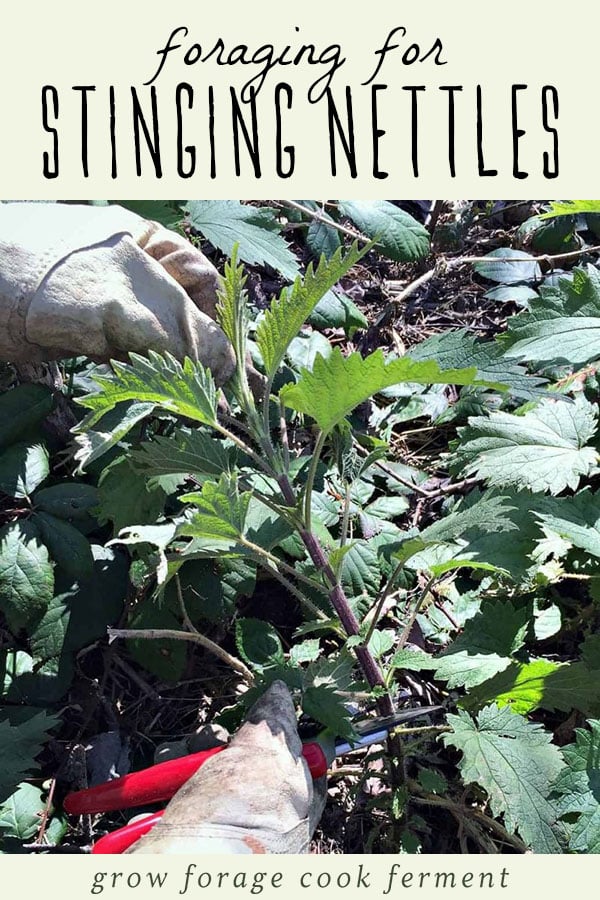
Want to save this post for later?
Wildcrafting Weeds
If you want to learn more about the edible and medicinal weeds that surround us and how to use them, check out my eBook: Wildcrafting Weeds: 20 Easy to Forage Edible and Medicinal Plants (that might be growing in your backyard)!
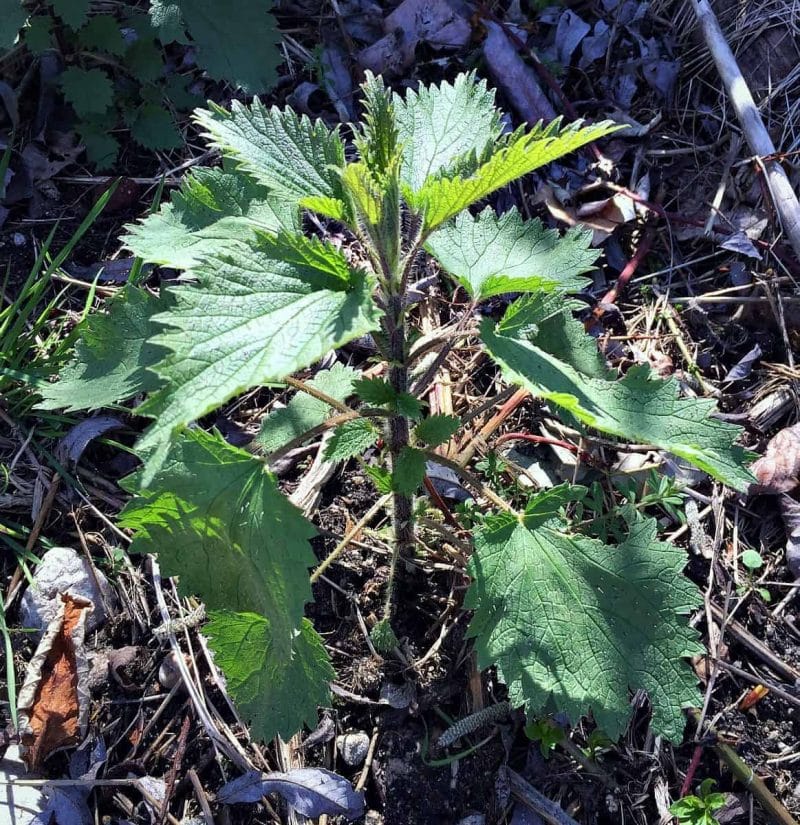
Yes, you can forage stinging nettle!
I’ve been interested in foraging for stinging nettles for quite a while now, but I have to admit that I was a bit scared because of the “stinging” part.
I mean, I know that you can (and should) wear gloves while collecting nettles, but then what? How can this plant that literally stings you be beneficial?
Well, clearly I had a lot to learn, because after some research I’ve found that stinging nettles are one of the most nutritious edible and medicinal wild plants out there.
You just have to be a little careful while collecting and preparing, but after that it’s all good – and good for you!
Related: What to Forage in Spring: 20 Edible and Medicinal Plants and Fungi, 13 Early Spring Edible Wild Greens
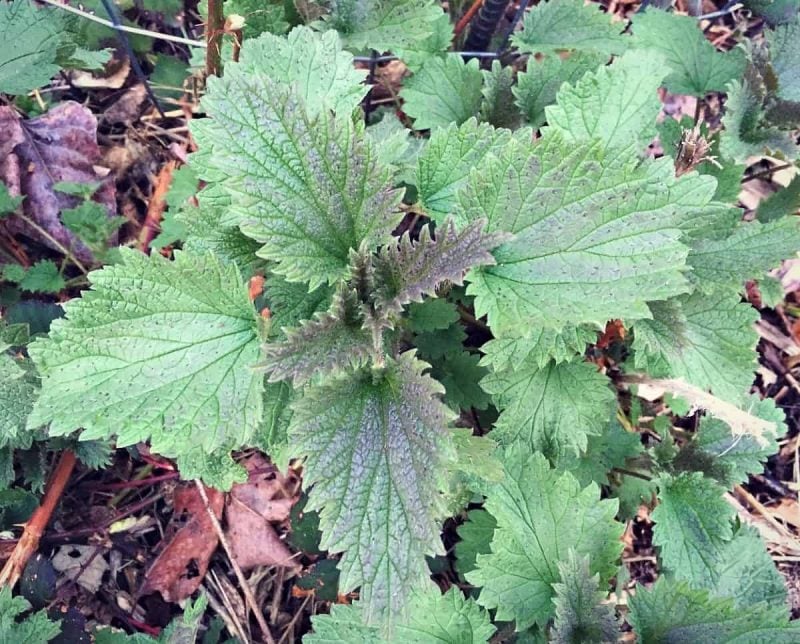
Identifying Stinging Nettle
Stinging nettle (Urtica dioica) is a tall perennial plant with opposite serrated leaves that are triangular or heart shaped and a square stem. Tiny green flowers grow in long clusters.
Stinging nettles are fairly easy to identify, but if you’re unsure you can always give them a little touch to find out for sure.
The funny thing is that they won’t always sting you right away, especially if you grab them hard, or with rough and calloused fingertips.
A light brush with the back of your hand, though, and you’re likely to feel it for sure. It took me a couple of tries to get the sting, but when it happened I knew it!
Turns out it wasn’t that bad, but I can see that if you were walking through a field of nettles in flip flops it wouldn’t be pleasant!
The sting did persist for several hours, although it was more annoying than painful. Be aware that some people have a much stronger reaction to the sting.
Keep in mind that the stinging hairs cover the plant, but are the most dense on the stem.
Stinging nettle has no toxic look-alikes. Wood nettles are closely related and are also edible.
Note that purple dead nettle is a totally different plant than stinging nettle. It is also edible and medicinal and doesn’t have a sting at all!
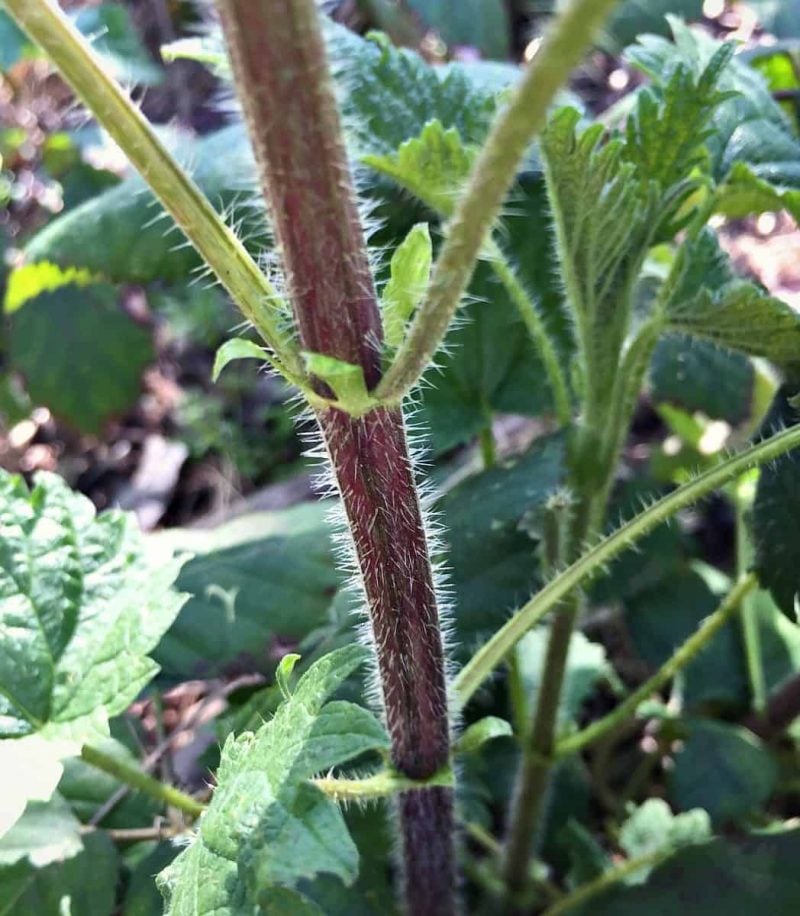
Where to Find Stinging Nettle
Finding stinging nettle is usually quite easy, and they grow in every Canadian Provence and US state, with the exception of Hawaii.
Stinging nettle grows particularly well in the Pacific Northwest because of all the rain we get here, and March through May are the best time to go looking.
Nettles tend to like stream banks, waterways, and disturbed areas. They are common in damp and fertile soil.
I even found a few among some thick blackberry brambles.
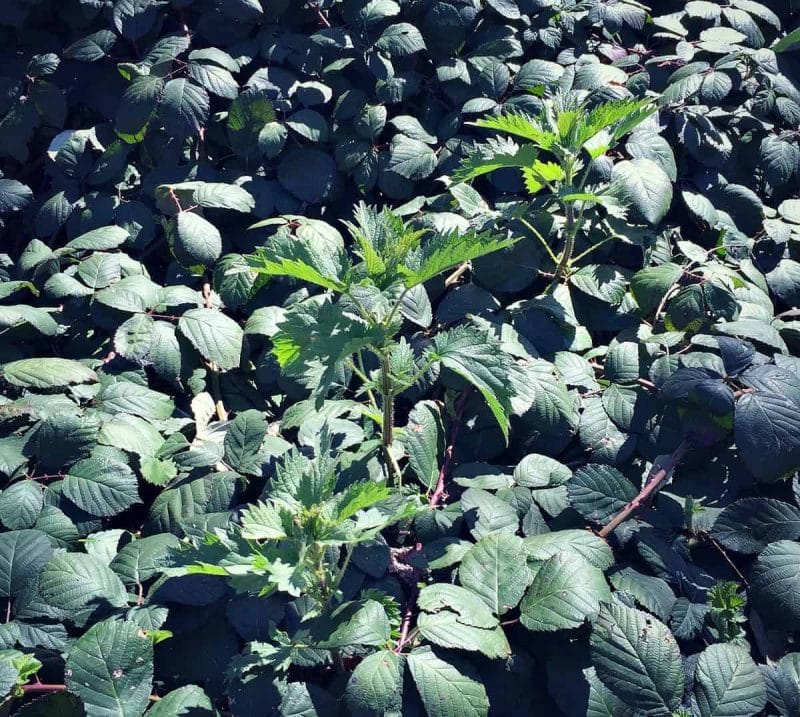
Harvesting Stinging Nettle
First, be sure that you are harvesting nettles in a clean location that is free from toxins, pesticides, or road runoff.
It’s best to harvest nettles when they are young, before they flower and set seed.
Definitely wear gloves while collecting to avoid the stinging hairs as much as possible!

Edible Uses of Stinging Nettle
The real question is, why would you even want to collect stinging nettles?
Firstly, they are a very nutritious food. Stinging nettles must be steamed or blanched in boiling water first to dispel the sting, but after that you can eat them like any green.
It’s best to use the most tender tips of the plant for cooking. The older leaves and stems can be tough and stringy.
They are wonderful sauteed in butter, or you can even turn them into nettle pesto! (If foraged pesto is your thing you can also try chickweed pesto or dandelion pesto!)
Nettles are an awesome superfood, and they have a large amount of many vitamins and minerals. They are particularly high in vitamins A and C, iron, potassium, manganese, and calcium.
Try this refreshing stinging nettle-ade for a tasty and nutritious foraged drink!
See my post with 40+ Stinging Nettle Recipes to get more ideas!
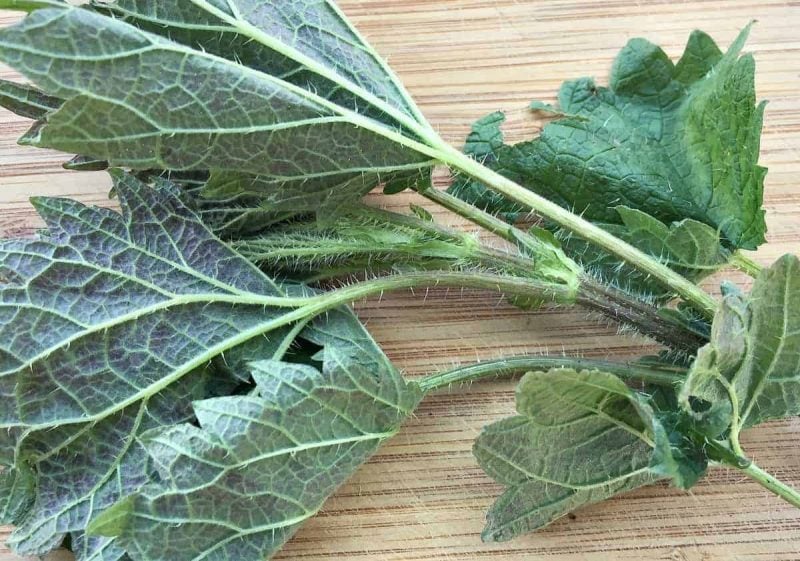
Medicinal Uses of Stinging Nettle
Nettles are also a potent medicinal plant. They are commonly used for kidney and bladder problems, including urinary tract infections.
Stinging nettles are also known as an all around tonic for women’s reproductive system, and are often used when trying to conceive, as well as throughout pregnancy (check with your doctor or midwife before using it during pregnancy).
Because of their high concentration of minerals, nettles are commonly used for bone ailments such as arthritis and osteoporosis.
Stinging nettles are commonly used to help seasonal allergies.
Nettles are also excellent for the hair and scalp! It is a common ingredient in herbal hair care products. Try this nettle vinegar hair rinse.
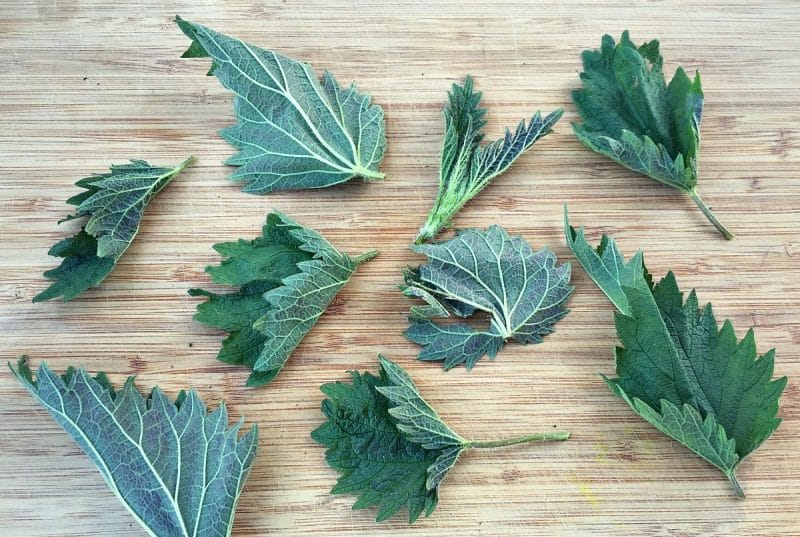
When used medicinally, nettles are often dried and made into a tea, or even better, as a mineral rich nettle infusion.
Foraged nettle leaves can be easily dried on a drying screen or in a dehydrator.
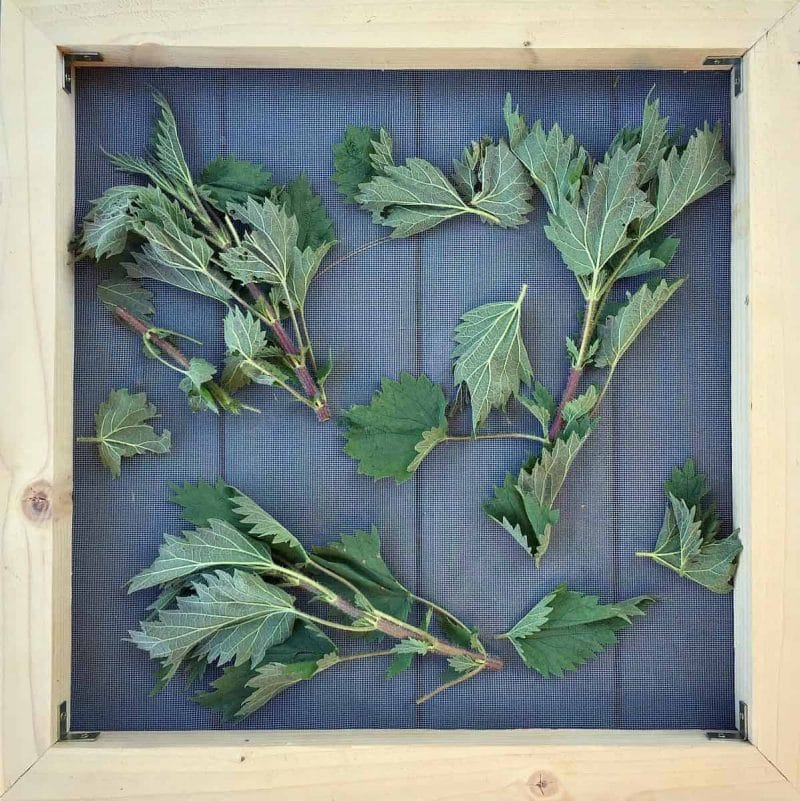
If you can’t find any nettles, or it’s the wrong time of year for collecting, you can purchase dried nettles from Mountain Rose Herbs.
I’ve also recently found out that nettles can also be used as fiber for spinning, animal feed, and as a type of rennet for cheese making. The possibilities seem endless!
I think some nettle pesto and nettle chips are in my near future.
I’m also very interested in the medicinal qualities of nettles and love drinking it as an infusion with other herbs. I have a recipe for oatstraw and nettle infusion in my book Healing Herbal Infusions.
Have you ever gone foraging for stinging nettles? If so, how have you prepared them?
Wondering what else to forage in spring?
Discover over 20 edible wild plants for spring foraging, including some of my favorites:

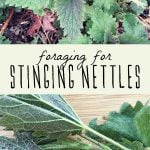

Hello!
Thank you for sharing all the benefits and great recipes of nettles! Got stung many times as they grow very well here in northern Italy, my grandma used to pick them barehanded! we try to forage them every year to add to frittata or make risotto.
Hi Colleen!
Thank you for this! I started a patch of nettles in my back garden, where burdock and wild asters are plentiful (my Irish cousins think I”m mad!). It has started to take off with a nice healthy patch going now. My concern is that they’ll really take off and I’d like to try to contain them to that area as much as I can. I’ve cut off the seed ends as soon as they appeared. I know they also travel by roots. Have you any suggestions about containing the patch while also allowing them to thrive?
Thanks again!
Susan
Hi Colleen!
I’m relatively new to your email newsletter but have been enjoying it greatly!
Wanted to share here that we harvest nettles every spring and then dry them to make a tincture for the next spring. I have spring allergies and the nettle tincture works wonders! I don’t take anything for my allergies except nettles. My husband has arthritis and so he harvests them for me and getting stung gives him his yearly dose of pain relief! (Yes, he does still wear gloves, but sometimes it’s inevitable.) The nettles are such a gift!
Would these work as a tincture?
Yes, you could make a stinging nettle tincture if you like!
I make nettle beer, nettle flatbread, nettle tonic, and eat them as a vegetable. If you have ever had arthritis or carpal tunnel, stinging yourself deliberately provides dramatic relief due to the formic acid and histamines that the plant helpfully injects into you. The Romans used to flog themselves with nettles in Celtic Britain. Pickled nettles are a delightful appetizer. Marinated nettles are even better. It’s truly a miracle plant!
We have lots of nettle growing on our land. Great article with lots of helpful information. I just signed up for your email course and look forward to learning more!
Nettle Soup is excellent! I was extremely intrigued by nettles at my first harvest season. Hoping to make an infusion with my dried nettles and converting to salve. Don’t know if it will be worth the time or not…but the soup is!
Please also be aware that stinging nettle is a blood thinner. I found out the hard way after a foraging class I took with Landon Cook. We made nettle soup and nettle pesto and, silly me, I ate A LOT of it that day. The next day, I coughed up blood. Not good. The lesson I learned was not to be over eager and take everything in small doses.
I live in southern Ontario, it’s late March- will I be able to find nettles now? Snow is nearly gone. Where would I have the best chance in finding them? Riverside? Deep in the woods?
They seem to like shady moist areas, look along shady gravel roads and stream banks.
I have an abundance of Nettle I harvest in Spring and early October. I use large paper grocery bags and poke holes all around as they are my picking and drying bags. Wear rubber gloves, long sleeves and pants. I hold the stem of the nettle plant and snap the tops off. I hang the harvested nettle to dry for a week or so, shaking the bag well at least once per day. I keep most dried for tea, but also make tincture from the fresh leaves and or roots. Here in SW Washington the Nettle is home and food for butterflies and other beneficial insects, so never deplete a source.
They say stinging nettles taste the same like spinach if you boil it and chop it up Not sure where I seen it but it was somewhere about making stinging nettles edible??
the medicinal thought is interesting but ive been stung TOO many times to think about putting them in my mouth. I would be the one to not get all the sting out before trying it. I shudder to think of it!
Fold them and eat them raw scares the kids heh heh heh
I fell into a large patch when I was a little girl. I will never forget the awful stinging so have carried that fear into my adult life. I do want to pick some, though, so will try the gloves and the tongs when I find some.
You can also use them in your soup stock or green smoothies (blanched).
There was a time when I nearly lived on Nettles and I was healthier than I’ve ever been. I would mix them with rice and eggs for breakfast. They were great.
I’ve read that its important to not pick them once they start to flower because of the huge increase in the amount of Silica. Do you know if this is true?
If I’m going to dry them do I still need to blanch first?
No, they don’t need to be blanched before drying.
No! Once they are dry the sting is gone.
I’m scared! But I have a field of them in the back so, this weekend I’m harvesting them and using them like spinach in our eggs. Can I refrigerate the rest?
Yes, for a day or two. It might be better to blanch and freeze them if you have a lot.
Just had nettle soup for lunch. Great food for free
Also very good against allergies
I use tongs to harvest them instead of gloves. I’ve dried for tea and have cooked in water then drained and eaten with salt and pepper. Very yummy.
Wenn you got stinged, look for Dock Plants.
The juise will help, when you rub the leaves over the sting.
And don’t forget the seeds in sommer! They are super nutrious. I like to roast them a bit and mix them in honey.
Bye,
Alex from Germany
I think I once read they are also help combat allergies…? Know anything about that?
I use nettle tea for allergies or sickness. When you have a runny, stuffy nose it dries it up very well.
How much nettle tea do you have to drink to achieve this?
I have heard about that. Apparently they work wonders as seasonal allergy medicine.